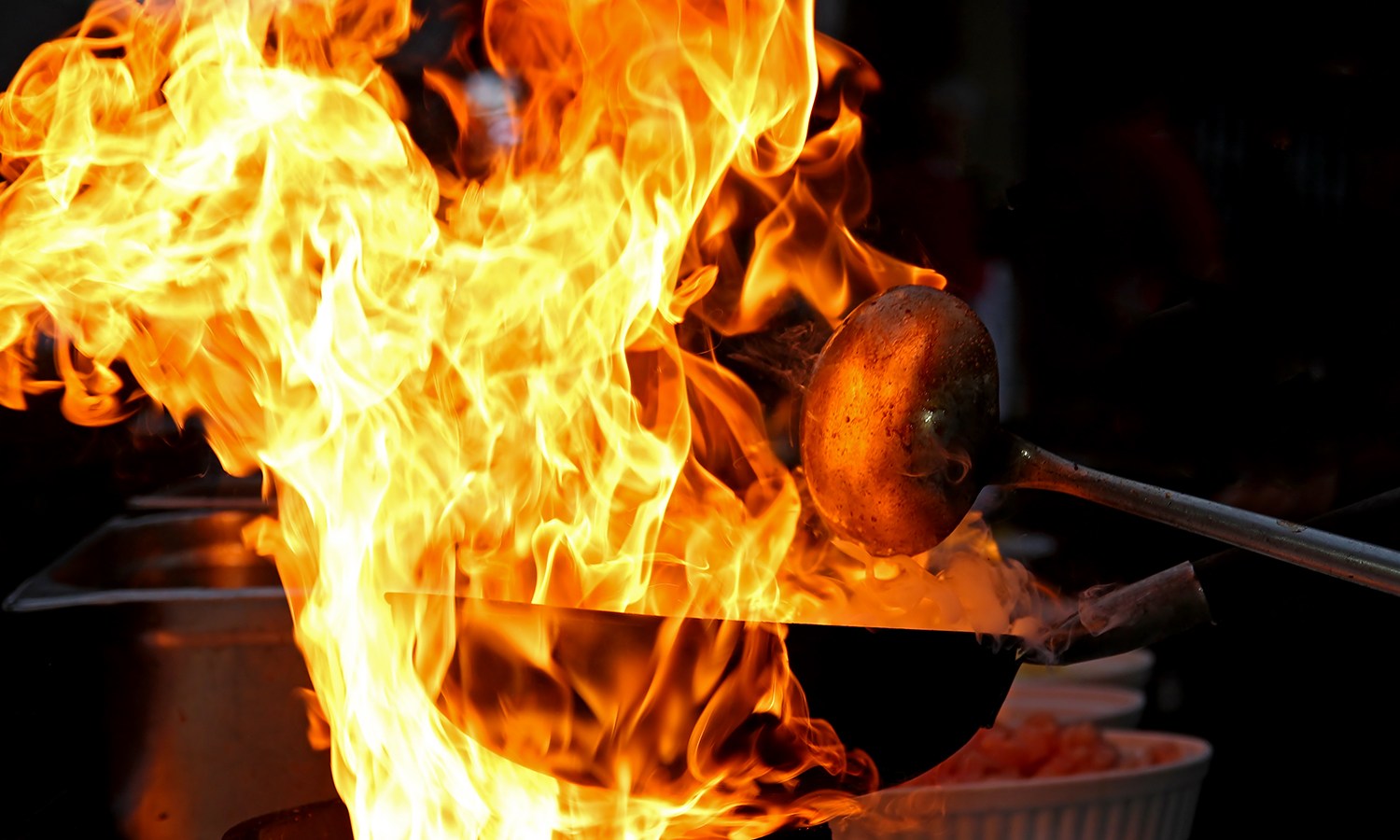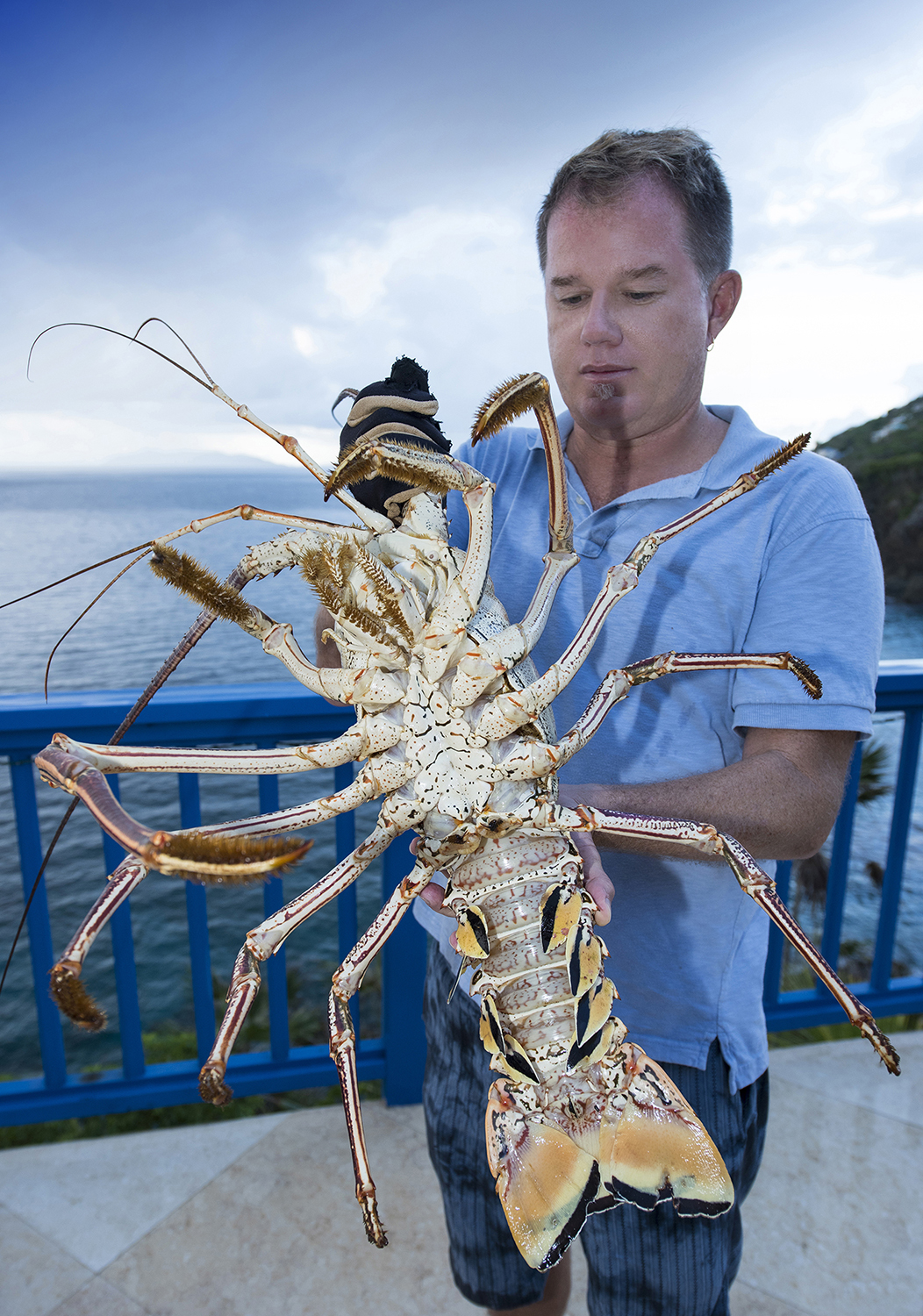Our Fascination for the Caribbean Lobster
By Alain M Brin
Caribbean lobsters love the clear waters around the Virgin Islands, with their strong nutrient-rich currents.
It all started as a child growing up in the Virgin Islands, when everything about happiness & existence seemed to revolve around the turquoise waters of the Caribbean... the snorkeling, diving, freediving, boating, fishing and lobstering. Over the years, I have come to appreciate and respect not just the Caribbean, but the Caribbean lobster. And not just as a culinary gift, but more importantly as a majestic creature with significant importance to thriving and sustainable ecosystems.
One of the largest crustaceans in the coral reefs and turquoise waters of the Virgin Islands, Caribbean spiny lobsters get their name from the forward-facing spines that help to protect them from potential predators, because unlike their famous relatives, the Maine lobsters, Caribbean lobsters do not have claws.
By day, you have to look hard for lobsters, as they are often hiding in caves, under ledges, and in crevices in the reefs. But at twilight and at night, they come out to forage along the reefs.
Lobster Facts:
Spiny lobsters reproduce in the spring and summer, and to keep the population sustainable, it’s illegal to catch females. It’s easy to tell: During that season, females carry bright orange eggs on the underside of the tail and have an extra pair of “swimming legs”. A female will also have a wider tail compared with a same-sized male (extra width to carry eggs). The larger the lobster, the more eggs.
Once hatched, lobster larvae travel long distances as plankton in currents before settling in shallow waters that act as nursery habitats.
Caribbean lobsters have two large antennae, used for fighting and defense, and two smaller antennules, which are sensory organs that can detect elements and movement in the water.
To take a spiny lobster, you must be sure it has a carapace length (length of the main body, without the tail) of at least 3 1/2 inches. This indicates the lobster is about two years old and has likely already reproduced. You’ll see lobster measuring plaques on many boats in the USVI.
As it grows, a spiny lobster molts and sheds its hard exoskeleton. After molting, the lobster is soft-bodied and very vulnerable to predators for about two days until a new, larger exoskeleton forms over the growing body.
Juvenile Caribbean lobsters spend a year in seagrass beds & mangrove roots before moving out onto reef to join adults. Local fishermen have reported seeing thousands of lobsters in this mangrove “nursery” before the tourism boom.
The Hunt & the Apron:
I have a deep affection & respect for lobsters, from their alien appearance to their unnerving stealth-like ability to track and follow your movement with their antennas. In the past 30 years I have caught and cooked lobsters in (I think) almost every possible way. Here is a list of my recommendations on catching & preparing Caribbean lobster.
First things first: only free dive for your lobster. Scuba diving gives diners an unfair advantage and can diminish sustainability of the lobster population. Never, ever spear or hook lobsters. It is illegal in most of the Caribbean, and it’s also considered unsporting (even before it was illegal). I recommend asking around for a loan of a traditional homemade snare (or directions to build one during a quick trip to our local Home Depot!), as commercially-designed snares require two hands to operate. With any traditional snare, you can hold onto a rock to steady yourself with one hand, while working the snare around a lobster’s tail with the other hand. I have numerous stories of less experienced hipster divers smiling at my homemade lobster snares only to stare when the catch is revealed.
The most important aspect of lobstering is to stop, look, and think. Lobsters generally won't bolt out of sight when you spot them, so the key is to not spook them; approach slowly and study their 'body language'. Consider their escape route and try to out-think them. If they have a deep hole behind them, then the optimum thing to do is to try to tickle their tail from behind to get them to turn away from the hole. If they have no exit, then it is easier, but you do want to direct their escape in such a way that it benefits you! Have your snare ready and analyze the entire area before making your final approach, avoiding sea urchins and sensitive coral that can easily be damaged in a struggle. And remember, lobsters swim backwards, so position your snare carefully around where their tail & carapace meet and slowly jerk to fasten. Bring the lobster to the surface and place in a dive bag or on the boat immediately. If you think the lobster is over 3 pounds, be prepared to carefully grab it by the base of the antennas, as their surprisingly strong struggle can actually snap a metal snare.
Leinster Bay, on the Northeast coast of St. John, is an ideal protected location in the Virgin Islands National Park to stumble on both baby lobsters in the mangrove shallows & mature lobsters on the fringing reef. (You are limited to two lobsters per person, per day in USVI National Park waters.)
Always try your hardest to avoid breaking legs or bruising a struggling lobster.
Fresh lobster at Villa Norbu is usually prepared steamed or grilled with organic butter, sea salt, garlic, fresh garden limes and served with a refreshing glass of chilled Chardonnay.
Avoid breaking legs, antennas or bruising the shell when handling any lobster to minimize suffering and tinting the quality of their meat. Try to cook lobsters in their whole protective shells whenever possible, because direct contact with heat & water can erode the molecular makeup of the meat and may affect the texture. I always recommend steaming or boiling for lobsters over 3 pounds in weight. There are a few ways to kill a lobster before boiling. First is freezing—placing the lobster in the freezer an hour before cooking will do the trick. Another quicker option—Floridian style—is to plunge the tip of a sharp knife straight down right behind the lobster's eyes, but this way water can seep into the shell and make a mess. If you don’t have a freezer, best is to tie the lobster’s tail tightly to its body with natural twine (to avoid a kitchen remodeling nightmare) before introducing it to any type of extreme heat. Heat your water to the highest temperature possible (212 degrees F and up) before dropping the lobster in head-first to kill it instantly. The lobster may continue to twitch for a few minutes, but the brain is dead. Let cool for about 30 minutes and begin the shell removing process .
Eating Lobster Island Style:
I always cringe when lazy divers & cooks discard the upper body (carapace) of lobsters. What they don’t realize is that the tastiest part of a lobster is not the tail as rumored, but rather in the legs and the fleshy parts located at the underbelly joints of the carapace and at the base of the antennas. These areas require a bit of patience and surgical work to extract, but are nevertheless rewarding. Dip these parts in hot salty organic garlic butter and you will undoubtedly slip into an induced state of foodie euphoria. Lobster is a very rich protein and will fill you up quickly, so do not remove the shell from the tail unless you are ready to consume it, as the shell locks in flavor and moisture, especially if refrigerated. Like Thanksgiving dinner leftovers, a lobster tail can inspire a variety of rewarding culinary experiments; from lobster omelets to lobster sandwiches. My favorite lobster leftover is Soolan’s Norbu Lobster Stir Fry.
The Leftovers:
Stir-fried Caribbean lobster with fresh vegetables is an easy and healthy way to inspire leftovers.
Soolan’s Norbu 15 minute Lobster Stir Fry Recipe:
INGREDIENTS
1 tablespoon of oyster sauce
2 tablespoon of sweet chili sauce
1 teaspoon of Soolan’s Corrupt Virgin house-made Hot Sauce
2 tablespoons of organic soy sauce
3 tablespoons organic avocado oil
2 garlic cloves, minced
1 tablespoon of fresh ginger, minced
1 pound fresh Caribbean lobster tail, sliced
1 red bell pepper, sliced
2 cups fresh sliced bok choy
1 fresh Thai chili pepper
Sliced green onions for garnish
Instructions
Glaze a wok with avocado oil at a medium-high heat. Add garlic & ginger; sautée until almost golden. Add sliced lobster tail, salt and stir for 1 minute. Add all sauces and stir for a few minutes. Add peppers, bok choy and stir until incorporated. Cover and cook 3 minutes or until bok choy & peppers are tender and the sauce has thickened. Serve with fresh chopped green onions and serve over basmati rice
A three-pound lobster is the ideal size for a couple or one very, very hungry person.
The Great Debate: Maine vs. Caribbean
Does Maine lobster taste better than Caribbean lobster? Maybe. Depends who’s asking, who’s answering, & who’s cooking. And of course how recently it was caught. Maine lobster is indisputably sweeter and more tender; however these traits pose a bit of a problem as they limit versatility in the meals. The Caribbean lobster can be prepared raw, steamed, boiled, grilled or broiled. The tail is also firm enough to be used in Asian stir fries without crumbling or disintegrating. There is a reason you don’t see Maine lobster stir-fry on menus. The Caribbean spiny lobster’s cousins, the Spanish & slipper lobster, are also found in the Virgin Island waters, but usually not sold commercially as fishermen consider them delicacies—the supreme treats—and save them to bring home to their own families.
This beautiful seven pounder was caught only a few yards offshore from the cliffs of Villa Norbu. After being carefully steamed and shelled, leaving behind no trapped meat, this lobster served as dinner for five.









